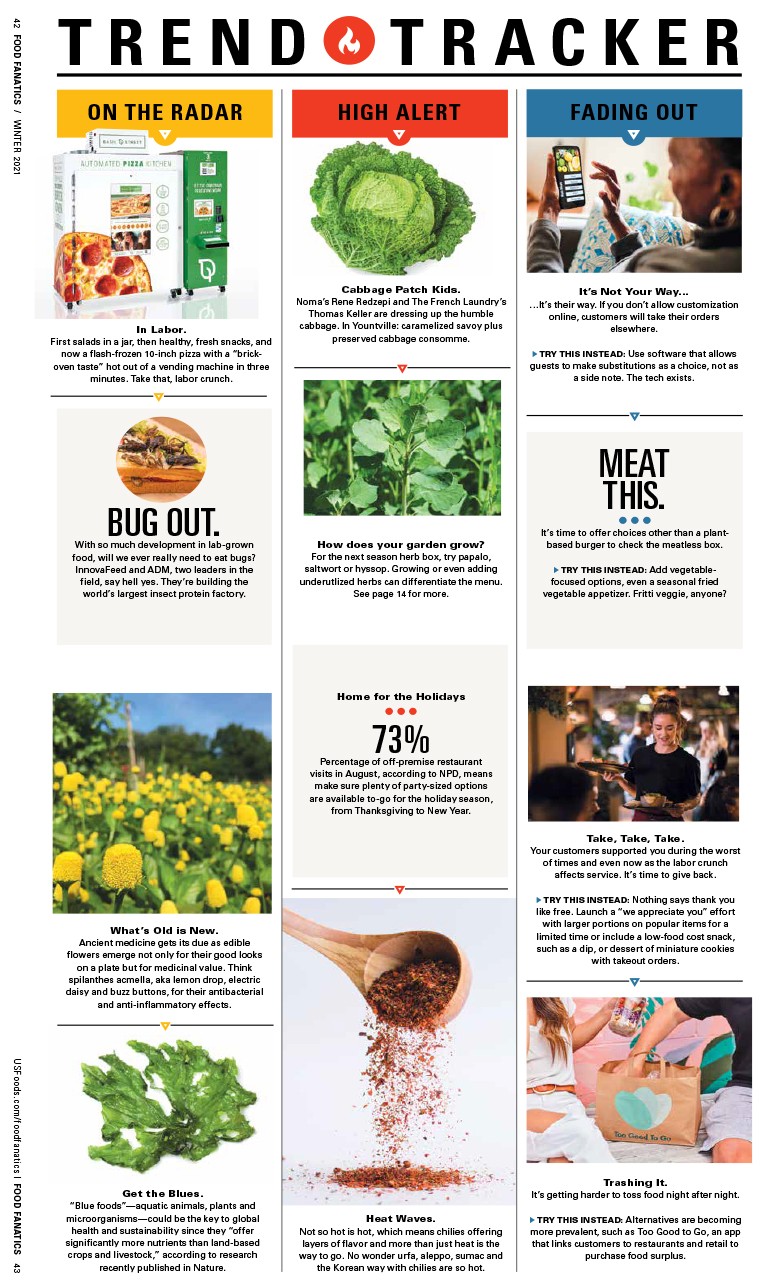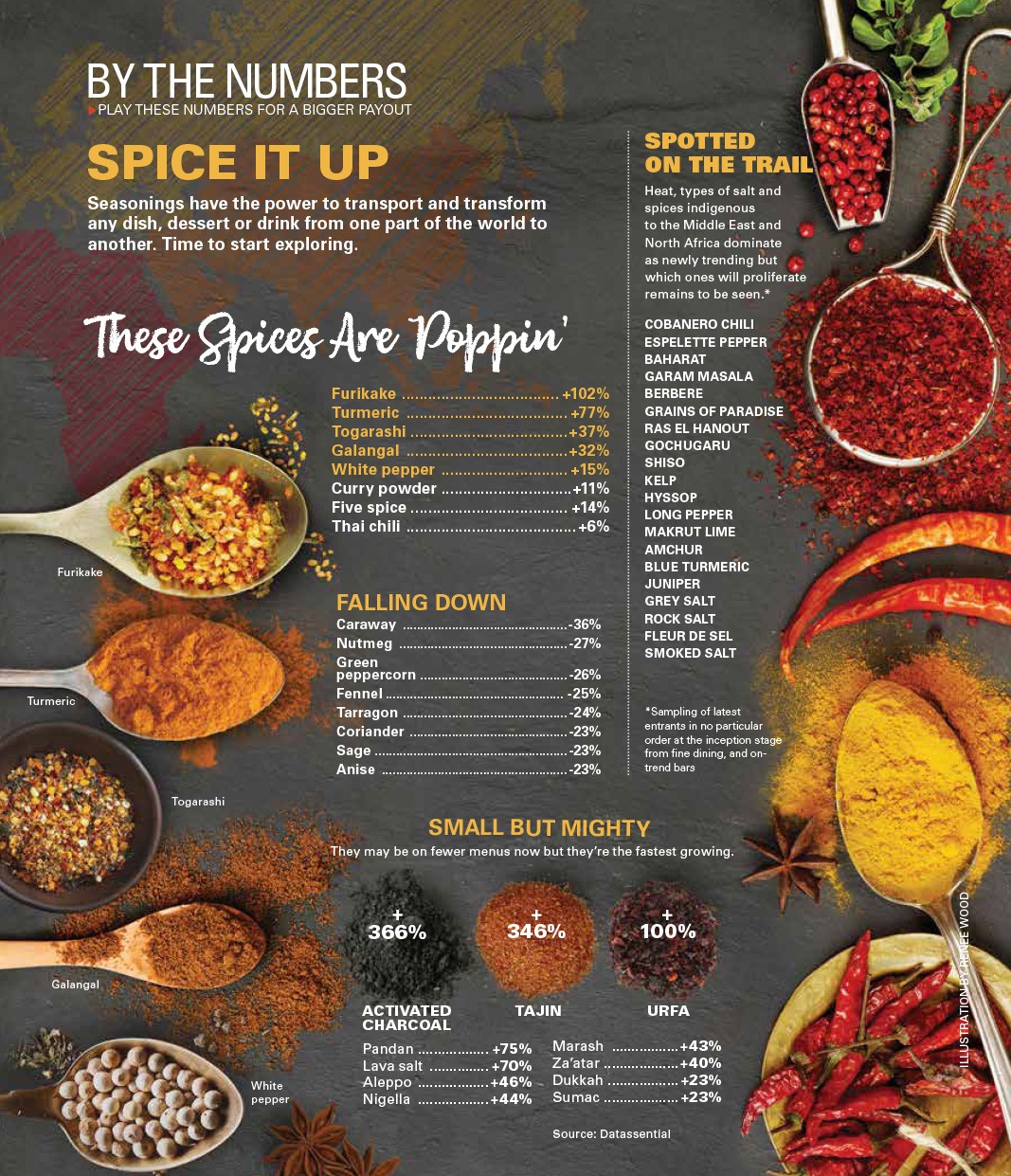Regional Mexican Cuisine Brings the Heat
Why regional Mexican is the hot new culinary trend
Just a decade ago, Italian restaurants began breaking out of their caprese salad-spaghetti-tiramisu holding pattern and started exploring Italy’s rich regional food culture. Today, the same phenomenon is occurring in Mexican restaurants.
“We are still in the spaghetti and meatballs phase of Mexican cooking,” says Jimmy Shaw, a Mexico City expat who is chef and founder of Lotería Grill, which has five locations around Los Angeles, and The Torta Company, also in Los Angeles. “But slowly we are getting into the ‘regional pasta’ phase.”
Mexican is second only to Chinese as the most popular ethnic restaurant category in the U.S., according to restaurant research firm Technomic. In a 2012 report, Technomic reported that 74 percent of consumers said they ordered Mexican food or flavors at least occasionally (once every 90 days).
Other factors have bolstered regional Mexican flavors on menus north of the border. American palates have grown accustomed to flavors like chipotle and mole. Plus, Mexican ingredients are more readily available. They’re showing up at chains like The Cheesecake Factory, which serves a mahi-mahi and shrimp Veracruz entree. In the non-commercial kitchens of the University of California at Berkeley, chefs are whipping up chilaquiles and agua frescas.
BUILDING ON TRADITION
Turning customers onto regional Mexican food posed somewhat of a challenge for the group behind San Francisco’s Nopalito when the restaurant opened in 2009. “People didn’t get the concept,” Executive Chef Gonzalo Guzman says. “They were used to Mexican-Californian food.”
Even when diners liked what they tasted, they grappled with the menu prices, which were higher than those at local taquerias. Buying local ingredients and preparing everything in-house, including grinding masa for tortillas, came with higher costs. But now, the restaurant is thriving and a second location opened in 2012.
Guzman, a native of Veracruz, bases Nopalito’s menu on the rustic foods he ate growing up in Mexico, like carnitas served from roadside stands in Michoacán. To make carnitas, he seasons pork shoulder with salt the day before and then braises it in lard on the stovetop—the old way, he explains—to ensure the pork’s exterior crisps while the inside stays tender. For flavor, he adds oranges, onions, garlic, bay leaves, cinnamon and piloncillo (a hard, unrefined cane sugar), and simmers the meat in beer and milk.
A no-frills trip down the coast of Baja California years ago hooked Chef-partner Deborah Schneider on the food of Mexico’s Pacific coast, which is strongly influenced by the proximity of the ocean, Asia and the U.S. Baja, she says, is the source of inspiration for her two locations of SOL Mexican Cocina in Newport Beach, Calif., and Scottsdale, Ariz.
At SOL, Schneider gives a nod to Ensenada-style ceviche with simple seasonings of lime juice, pico de gallo and serrano chiles. But rather than run the fish through a grinder (the Ensenada way), she serves the fish sashimi-style, adding lime juice right before serving so it doesn’t “cook” the delicate flesh.
Meanwhile, at Solita Tacos & Margaritas, her restaurant in Huntington Beach, Calif., Schneider cooks on a wood-fired grill as a tribute to rustic northern Mexican cooking. “You don’t have big herds of cattle and you don’t cook beef,” she says. “You look at the ocean and you grill.”
When Shaw opened his first Lotería Grill in 2002, he wanted a menu representative of the foods he grew up with in Mexico City. “From day one, I said that this restaurant would have to work in Mexico,” he recalls. “If I could put it through that filter, it passed the test.”
MOLE AND MORE
In Austin, Texas, diners have fallen for mole, one of Mexico’s most beloved sauces. With mole, regional variations abound. At El Naranjo, Chef-owner Iliana de la Vega serves three moles daily, offering mole poblano (from Puebla), mole amarillo (from Oaxaca) and a rotating selection of other regional moles.
A key to mole is ensuring no single ingredient stands out. “It’s knowing the proportions and flavors,” explains de la Vega, whose mole experience stems from operating a restaurant with the same name in Oaxaca for several years before moving to Austin. Another key: no shortcuts. Ingredients need to be roasted, blended and cooked in specific stages to allow the flavors to fuse together.
Also in Austin, Executive Chef Alma Alcocer of El Alma makes a pasilla mole with a handful of dried chiles, blackened onions and garlic, charred tortillas and animal cookies (both act as a thickener), fried bananas and chocolate. She serves the velvety sauce with shredded duck wrapped in a tortilla.
“Five or six years ago, someone said to me, ‘I haven’t had success with mole,’” Alcocer says. “We have mole on our menu and people love it. Customers come back and they ask for a pint of it.”
Sauce work extends beyond mole. For vegetable enchiladas, Alcocer deepens the tomatillo salsa flavor by adding smoky chipotles mecos (a dried variety rather than packed in adobo). The salsa is rich with smoky chiles, grilled green onions and grilled cilantro, giving an edge to the poblano-mushroom-spinach filling.
Other restaurants in Austin are playing off the popularity of Mexican sauces. Chef-owner Parind Vora applies flavors from all over the globe to his tapas-style restaurant, Tapasitas. To accompany a southern-style crab cake, he makes a red enchilada sauce with guajillo peppers, chile de arbol, garlic and tomatillos. “What I like to do is take [regional] items and swap out a few ingredients so that it’s different but it retains cultural authenticity,” he explains.
TACO TAKEOVER
Taco fever shows no signs of slowing down. Among the 1,250 restaurant brands followed by Technomic’s MenuMonitor database, tacos and taquitos on menus grew 24 percent from 2012 to 2013.
That’s a big change from ten years ago, according to Chef-partner Patricio Sandoval, who opened Mercadito in New York City with his brother Alfredo in 2004 to focus on tacos, ceviches and other Mexican street foods. “Who was doing tacos before 2004 who wasn’t Mexican?” asks the chef-partner of the four-unit concept. “Now you have Japanese restaurants that have a version of a taco.”
At his Chicago location, Sandoval makes goat barbacoa (barbecue) inspired by Acapulco. He marinates the goat in ancho and pasilla chiles, wraps the meat in the outer layer of maguey leaves, bakes it until tender (three to four hours), and serves it with pickled cabbage, salsa and tortillas.
Carl Sobocinski, owner of multiple restaurant concepts in Greenville, S.C., sees opportunity in tacos. He shut down an underperforming gelato shop and handed the small-footprint storefront over to Jorge Baralles, a long-time employee and native of Cuautla, Mexico.
The counter-service concept, Papi’s Tacos, serves classic tacos such as al pastor, with pork, cilantro and pineapple, and tortas made with bolillos (a classic Mexican sandwich roll). Baralles makes a traditional torta with pinto beans simmered for two hours, cooked with spring onions and blended with Mexican mayonnaise, which has a lime accent. It is topped with tomatoes, lettuce, avocado and jalapeños.
For the new operation, the challenge lies in balancing labor costs involved with cooking everything from scratch and serving customers during the lunch rush with low menu prices. But Sobocinski’s optimistic: “I think volume is going to cure everything,” he says.
Kate Leahy is an award-winning west coast writer and cookbook author who recently returned from a trip to Mexico.
Take A Deeper Dive into Mexico
Choose tomatillos over tomatoes. “You only see tomatoes when they’re in season,” says Chef Debora Schneider of SOL Mexican Cocina. “Most of the salsas are made with tomatillos.”
Try hoja santa. “It’s a leaf from the black pepper family, and it has a very intense anise taste,” explains Chef Iliana de la Vega of El Naranjo. “It’s used fresh on fish and shrimp and in salsas.”
Avoid French technique. “No emulsions; no fish with mashed potatoes,” says Chef Patricio Sandoval. “You want to highlight the flavors, the chiles, the cilantro.”
Toast dried chiles gently before using them—but start over if you burn them. “It’s like burning sugar,” says Chef Jimmy Shaw of Lotería Grill.
Don’t forget the vegetables. Think greens, like watercress and chard, and squashes and pumpkins. “Swiss chard is more common than spinach,” says Chef Alma Alcocer of El Alma.



